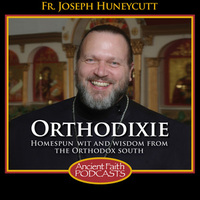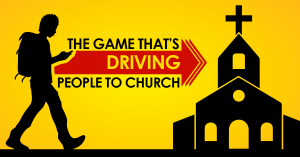 This 16th century icon, the Korsun Mother, is taken from the Index of Early Christian and Byzantine Image Pages — a wonderful site!
This 16th century icon, the Korsun Mother, is taken from the Index of Early Christian and Byzantine Image Pages — a wonderful site!
For most American Orthodox, today is the Feast of the Nativity of the Theotokos. (Check here for a complete look at the Church year.)
These Orthodox, though they’ll wait 13 days to celebrate this Feast, are celebrating an upcoming union … long in coming. Today, all Orthodox rejoice!
By Fr Alexander Schmemann
The Church’s veneration of Mary has always been rooted in her obedience to God, her willing choice to accept a humanly impossible calling. The Orthodox Church has always emphasized Mary’s connection to humanity and delighted in her as the best, purest, most sublime fruition of human history and of man’s quest for God, for ultimate meaning, for the ultimate content of human life. If in Western Christianity veneration of Mary was centered upon her perpetual virginity, the heart of the Orthodox Christian East’s devotion, contemplation, and joyful delight in Mary has always been her Motherhood, her flesh and blood connection to Jesus Christ. The East rejoices that the human role in the divine plan is pivotal.
The Son of God comes to earth, God appears in order to redeem the world, He becomes human to incorporate man into His Divine vocation, but humanity takes part in this. If it is understood that Christ’s “co-nature” with us is Christianity’s greatest joy and depth, that He is a genuine human being and not some phantom or bodiless apparition, that He is one of us and forever united to us through his humanity, then devotion to Mary also becomes understandable, for she is the one who gave Him His human nature, His flesh and blood. She is the one through whom Christ can always call Himself “The Son of Man.”
Son of God, Son of Man… God descending and becoming man so that man could become divine, could become a partaker of the divine nature (2 Pet 1:4), or as the teachers of the Church expressed it, “deified.” Precisely here, in this extraordinary revelation of man’s authentic nature and calling, is the source of that gratitude and tenderness which cherishes Mary as our link to Christ and, in Him, to God. And nowhere is this reflected more clearly than in the Nativity of the Mother of God. Nothing about this event is mentioned anywhere in the Holy Scriptures. But why should there be? Is there anything remarkable, anything especially unique about the normal birth of a child, a birth like any other? And if the Church began to commemorate the event with a special feast it was not because the birth was somehow unique or miraculous or out of the ordinary; but because on the contrary, the very fact that it is routine discloses something fresh and radiant about everything we call “routine” and ordinary, it gives new depth to the “unremarkable” details of human life. What do we see in the icon of the feast when we look at it with our spiritual eyes? There on a bed lies a woman, Anna according to Church tradition, who has just given birth to a daughter.
Next to her is the child’s father, Joachim according to the same tradition. A few women stand by the bed washing the newborn baby for the first time. The most routine, unremarkable event. Or is it? Could it be that the Church is telling us through this icon that every birth, every entrance of a new human being into the world and life is a miracle of miracles, a miracle that explodes all routine, for it marks the start of something unending, the start of a unique, unrepeatable human life, the beginning of a new person. And with each birth the world is itself in some sense created anew and given as a gift to this new human being to be his life, his path, his creation.
This feast therefore is first a general celebration of Man’s birth, and we no longer remember the anguish, as the Gospel says, “for joy that a human being is born into the world” (Jn 16:21). Secondly, we now know whose particular birth, whose coming we celebrate: Mary’s. We know the uniqueness, the beauty, the grace of precisely this child, her destiny, her meaning for us and for the whole world. And thirdly, we celebrate all who prepared the way for Mary, who contributed to her inheritance of grace and beauty. Today, many people speak of heredity, but only in a negative, enslaving and deterministic sense. The Church believes also in a positive spiritual heredity. How much faith, how much goodness, how many generations of people striving to live by what is high and holy were needed before the tree of human history could bring forth such an exquisite and fragrant flower-the most pure Virgin and All Holy Mother! And therefore the feast of her Nativity is also a celebration of human history, a celebration of faith in man, a celebration of man. Sadly, the inheritance of evil is far more visible and better known.
There is so much evil around us that this faith in man, in his freedom, in the possibility of handing down a radiant inheritance of goodness has almost evaporated and been replaced by cynicism and suspicion… This hostile cynicism and discouraging suspicion are precisely what seduce us to distance ourselves from the Church when it celebrates with such joy and faith this birth of a little girl in whom are concentrated all the goodness, spiritual beauty, harmony and perfection that are the elements of genuine human nature. In and through this newborn girl, Christ-our gift from God, our meeting and encounter with Him-comes to embrace the world. Thus, in celebrating Mary’s birth we find ourselves already on the road to Bethlehem, moving toward to the joyful mystery of Mary as the Mother to God.
Taken from “Celebration of Faith” Sermons, Vol. 3, “The Virgin Mary,” by the late Protopresbyter Alexander Schmemann, 1995.
Thanks to FWD from Jean-Michel — especially, again, for THIS WONDERFUL SITE.











